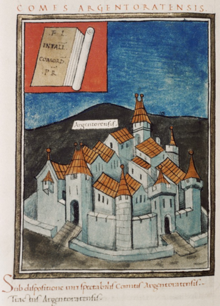Comes tractus Argentoratensis
- View a machine-translated version of the German article.
- Machine translation, like DeepL or Google Translate, is a useful starting point for translations, but translators must revise errors as necessary and confirm that the translation is accurate, rather than simply copy-pasting machine-translated text into the English Wikipedia.
- Do not translate text that appears unreliable or low-quality. If possible, verify the text with references provided in the foreign-language article.
- You must provide copyright attribution in the edit summary accompanying your translation by providing an interlanguage link to the source of your translation. A model attribution edit summary is
Content in this edit is translated from the existing German Wikipedia article at [[:de:Comes tractus Argentoratensis]]; see its history for attribution. - You may also add the template
{{Translated|de|Comes tractus Argentoratensis}}to the talk page. - For more guidance, see Wikipedia:Translation.

The comes tractus Argentoratensis (literally: "count of Strasbourg region") was in late antiquity commander of units of the mobile field army of the Western Roman Empire, operating along the Rhine frontier (Danube–Iller–Rhine Limes) in the Diocese of Gaul.[1]
Definition
The title Comes was usually awarded to members of the highest rank of the nobility (vir spectabilis), or to the closest confidants of the Emperor. In the late Roman army, it was then transferred to the commanders of mobile field armies (comitatenses) or to officers who were entrusted with temporary special commands (Comes rei militaris) . His direct superior was the magister peditum praesentalis of the West, the supreme commander of the infantry troops. His area of responsibility (Tractus) mainly included the region around the Legion camp Argentoratum (in the present day Strasbourg and Alsace), in the province of Germania Prima.
According to one source, the position was created around 408, following the barbarian occupation of most of Gaul, and lasted until Gaul was recovered in 416.[2]
References
- ^ Scharf, Ralf (2008). Der Dux Mogontiacensis und die Notitia Dignitatum (in German). Walter de Gruyter. pp. 68–71. ISBN 978-3-11-018835-6. Retrieved Jul 22, 2019.
- ^ Jones, Arnold Hugh Martin (1986). The Later Roman Empire, 284-602, v.1. Baltimore: JHU Press. pp. 191–192. ISBN 0-8018-3285-3. Retrieved Jul 22, 2019.
- v
- t
- e












